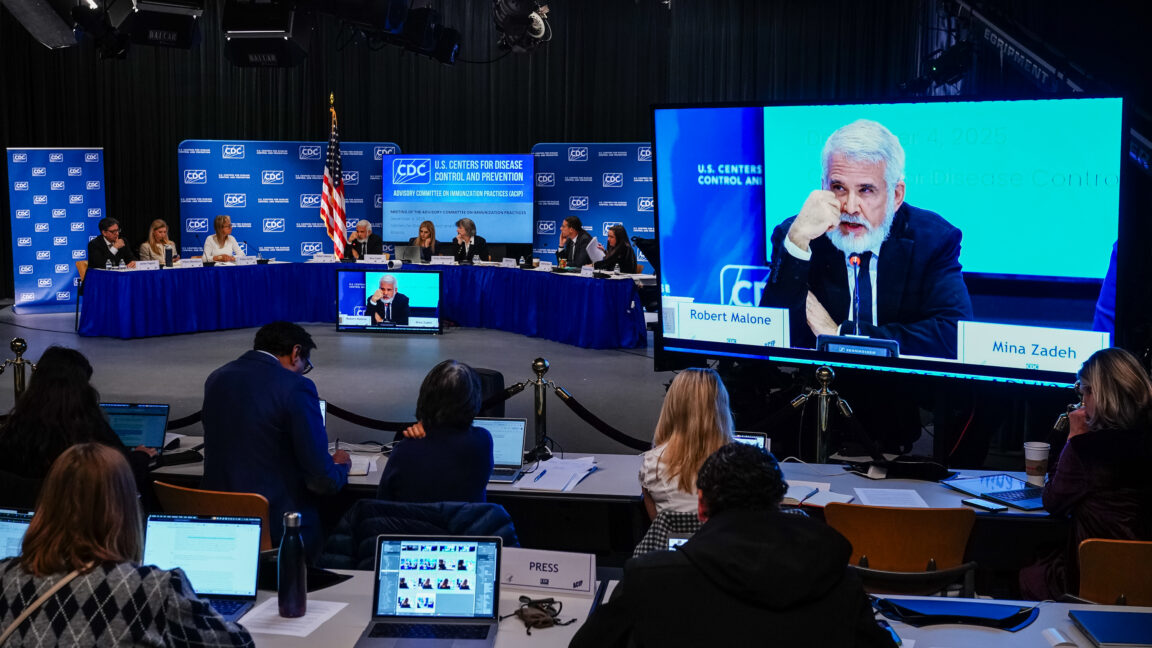The panel of federal vaccine advisors hand-selected by anti-vaccine Health Secretary Robert F. Kennedy Jr. has once again punted on whether to strip recommendations for hepatitis B vaccinations for newborns—a move it tried to make in September before realizing it didn’t know what it was doing. The decision to delay the vote today came abruptly this afternoon when the panel realized it still does not understand the topic or what it was voting on.
Prior to today’s 6–3 vote to delay a decision, there was a swirl of confusion over the wording of what a new recommendation would be. Panel members had gotten three different versions of the proposed recommendation in the 72 hours prior to the meeting, one panelist said. And the meeting’s data presentations this morning offered no clarity on the subject—they were delivered entirely by anti-vaccine activists who have no subject matter expertise and who made a dizzying amount of false and absurd claims.
“Completely inappropriate”
Overall, the meeting was disorganized and farcical. Kennedy’s panel has abandoned the evidence-based framework for setting vaccine policy in favor of airing unvetted presentations with misrepresentations, conspiracy theories, and cherry-picked studies. At times, there were tense exchanges, chaos, confusion, and misunderstandings.

Time on Mars works a little like time on Earth — but with a twist. A Martian “day” (or “sol”) is about 24 hours, 39 minutes, and 35 seconds — roughly 40 minutes longer than an Earth day. That difference may sound small, but over weeks or months it adds up, so if you were living on Mars you’d constantly feel a bit “jet-lagged.”
A Martian year, too, is longer: one orbit around the Sun requires about 668.6 Martian sols — nearly 1.88 Earth years.
That means seasons drift slowly, and a “year” on Mars plays out quite differently than on Earth.
Because of these differences — in day-length, year-length, and orbit — standard Earth calendars don’t map neatly onto Mars. Scientists and NASA engineers rely on Martian solar time systems tied to the planet’s own rotation and the position of the Sun in the Martian sky.
Adding another layer of strangeness: time itself ticks differently on Mars. Recent physics calculations show that a clock on Mars runs slightly faster than one on Earth — about 477 microseconds per Martian day. That’s only a tiny fraction of a second, but for precise tasks like navigation, communications, or synchronizing spacecraft, every microsecond counts.
So if humans ever settle on Mars — or send long-term robotic missions — we’ll have to rethink timekeeping entirely: adjusting to longer days, longer years, shifting seasons, and subtle relativistic effects on clocks.
In short: living by “Mars time” wouldn’t just feel like being permanently 40 minutes out of sync — it would be living in a fundamentally different rhythm of days, seasons, and even seconds.
